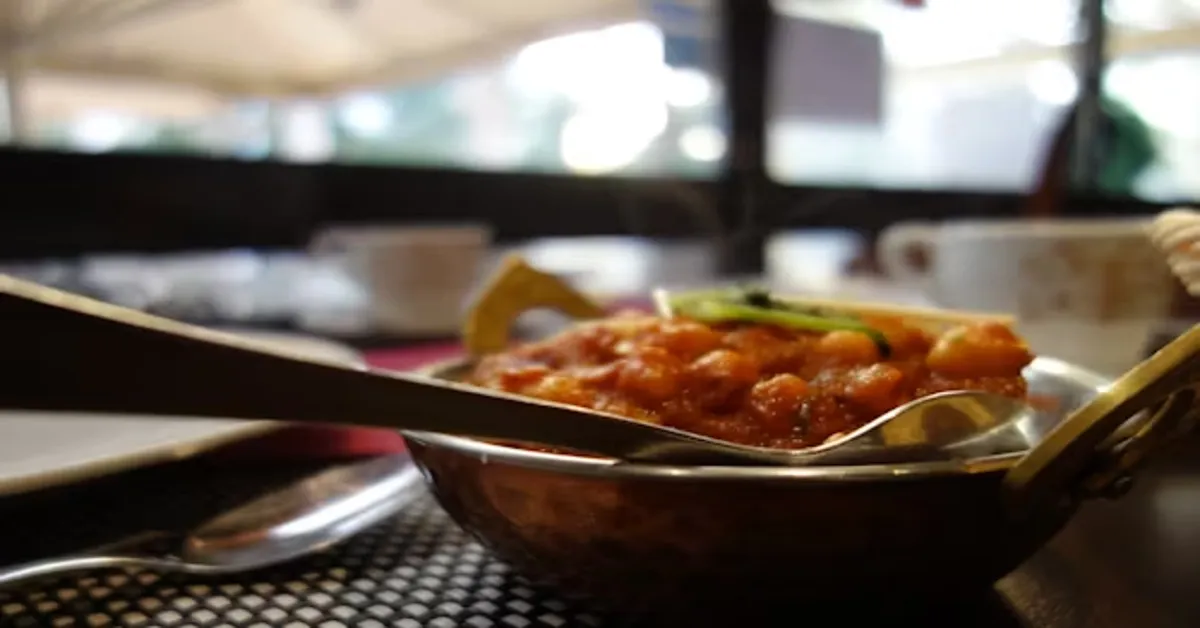For the modern food enthusiast or the curious traveler wandering through southern India, the word “Bappam” may seem unfamiliar—overshadowed by more widely known dishes like dosa, idli, or appam. But delve deeper into the coastal and agrarian communities of Kerala, parts of Tamil Nadu, and certain Sri Lankan Tamil enclaves, and you’ll find Bappam occupying a central place at the intersection of food, ritual, and memory. At its heart, Bap-pam is a fermented rice and coconut preparation—steamed to a pillowy softness—that blurs the lines between bread and cake, daily staple and ceremonial food.
In the simplest terms, Bappam is a steamed rice cake made from fermented rice batter and coconut, traditionally prepared in earthen or steel moulds, served with coconut milk, curries, or chutneys. But to stop at that would be to miss its deeper culinary heritage and living evolution.
This article unfolds the rich narrative of Bap-pam: its etymological roots, preparation techniques, nutritional qualities, regional adaptations, and the cultural tapestry that gives it enduring relevance. This is not just food—it’s a vessel of tradition, technique, and transformation.
A Name with Deep Roots
The name “Bap-pam” itself likely derives from a Dravidian linguistic stem. Some linguists trace it to “appam”—a general term for steamed or fried rice cakes in southern India—and “ba” from regional dialects implying softness or swelling. Over time, the term evolved uniquely across regions:
| Region | Local Name | Distinction |
|---|---|---|
| Kerala | Bappam or Vattayappam | Often made for Christian feasts and festivals |
| Tamil Nadu | Paniyaram (variant) | Similar in method, but cooked in moulds with ghee or oil |
| Sri Lanka | Appa or Bappa | Used with toddy for fermentation in Tamil households |
| Coastal Karnataka | Sannas | Yeast or toddy-fermented, paired with meat or fish curries |
Bappam, as a name and dish, travels through linguistic, religious, and geographical identities—shaped as much by palm toddy as by coconut palms.
Ingredients and Method: The Science of Softness
The magic of Bap-pam lies in its ingredients and method—deceptively simple, but chemically rich.
Core Ingredients:
- Raw rice (soaked and ground)
- Grated coconut
- Cooked rice (optional, for texture)
- Sugar or jaggery (small amount, for fermentation)
- Yeast or toddy (natural leavening)
- Salt
- Water
Preparation Steps:
- Soaking: Raw rice is soaked for at least 4–6 hours to soften the starches.
- Grinding: The soaked rice is ground with grated coconut, and sometimes a spoon of cooked rice, into a fine batter.
- Fermentation: The batter is allowed to ferment overnight, often with a touch of yeast or toddy, which introduces beneficial lactobacilli and wild yeast.
- Steaming: Once risen and airy, the batter is poured into a shallow plate or mould and steamed until it solidifies into a soft, fluffy cake.
- Serving: Bappam can be served plain, sweetened, or with accompaniments like vegetable stew, meat curry, or sweet coconut milk.
| Ingredient | Function |
|---|---|
| Rice | Base starch and body |
| Coconut | Adds fat, aroma, and softness |
| Yeast/Toddy | Leavening agent to make it rise |
| Sugar | Feeds the yeast during fermentation |
| Cooked rice | Enhances texture and fermentation speed |
The final product is slightly spongy, mildly sweet, and incredibly absorbent—perfect for soaking up flavors from gravies or broths.
Bappam in Culture and Ritual
More than a food, Bappam carries cultural and sometimes even spiritual meaning. In Kerala’s Christian households, Vattayappam (a sweetened version of Bappam) is often prepared during festivals like Christmas and Easter. It’s common to find Bappam offered in church feasts, community gatherings, and wedding breakfasts.
In coastal Tamil Nadu and Sri Lanka, Bappam is part of ancestral rituals—offered to deities or consumed on days of religious observance. Its simplicity and lightness make it suitable for fasting days, while its fermentation process makes it symbolic of life, transformation, and continuity.
In many traditional homes, the making of Bappam is a communal affair, often passed down matrilineally. Grandmothers oversee the fermentation like a sacred rite—gauging readiness by smell, not thermometer; by sight, not timer.
How Bappam Differs from Appam and Idli
At first glance, Bappam might resemble an appam or an idli—but the distinctions are meaningful.
| Dish | Fermentation | Cooking Method | Texture | Typical Use |
|---|---|---|---|---|
| Bappam | Yes | Steamed flat | Spongy and thick | Eaten plain or with gravies |
| Appam | Yes | Cooked in curved pan | Crispy edges, soft center | Paired with stew |
| Idli | Yes | Steamed in moulds | Uniform, soft, springy | Breakfast staple with chutney |
While all these foods share fermentation and rice, Bappam stands apart for its flat steaming style, larger serving format, and use of coconut in the batter itself.
Bappam and Gut Health: A Nutritional Perspective
Fermented foods like Bappam are increasingly drawing attention in the wellness community—not just for their taste but for their nutritional profile.
Why Bappam is Good for You:
- Natural Fermentation: Introduces probiotics, aiding digestion and gut health.
- Low Glycemic Load: The addition of coconut fat slows sugar absorption.
- Gluten-Free: Made without wheat or flour, making it suitable for those with gluten sensitivity.
- Plant-Based: Completely vegetarian and vegan-friendly if served without dairy or meat sides.
In a time when gut microbiomes are recognized as central to overall health, Bappam offers a traditional, non-industrial form of fermented food with real benefits.
| Nutrient | Approx. per 100g of Bappam |
|---|---|
| Calories | 180 kcal |
| Carbohydrates | 35 g |
| Protein | 3 g |
| Fat | 2 g |
| Fiber | 1.5 g |
| Sodium | 70 mg |
| Probiotics | Varies (depending on fermentation time) |
Of course, these values can vary widely depending on how Bappam is made and served.
Regional Variations: From Home Kitchens to Hotel Menus
One of the most delightful aspects of Bap-pam is its adaptive character. It reflects local tastes, ingredients, and even dietary rules.
- Sweet Bappam: Made with jaggery and cardamom, served as a tea-time cake.
- Savoury Bappam: Paired with spicy mutton curry or egg stew.
- Toddy-Fermented Bappam: Common in coastal and rural regions, with a slight tang and airy texture.
- Banana Bappam: Includes mashed banana in the batter, yielding a dessert-like variant.
Restaurants today—especially those championing heritage cuisine—are reviving Bap-pam with creative pairings. Think: Bap-pam with prawn moilee, or truffle-infused coconut chutney. The humble dish is being plated for a modern audience.
Bappam in the Modern Kitchen: Adapting to Contemporary Life
With changing lifestyles and tighter schedules, many wonder if Bap-pam is feasible in modern kitchens. The answer is yes—with small adaptations.
Quick Tips for Busy Kitchens:
- Use instant yeast to speed up fermentation.
- Invest in electric steamers or idli cookers for uniform results.
- Prepare and freeze batter in small portions for use over a week.
- Mix multigrain flours into the batter for added nutrition.
Even for urban, nuclear families, Bap-pam can offer a weekend breakfast that reconnects generations through food.
The Global Parallel: Bappam Across Borders
Globally, many cultures use steamed fermented batters to make staple foods. Bap-pam sits comfortably among these traditional cousins:
| Dish | Country | Base Ingredient | Texture |
|---|---|---|---|
| Putu Mayam | Malaysia/Singapore | Rice flour | Thin, noodle-like |
| Kenkey | Ghana | Corn | Fermented and dense |
| Idli | India | Rice and lentil | Soft and spongy |
| Baozi (Mantou) | China | Wheat flour | Fluffy bun |
| Bappam | India/Sri Lanka | Rice and coconut | Flat and spongy |
What links them all is fermentation as a universal human innovation—preserving nutrients, improving flavor, and promoting digestion.
Challenges in Preservation and Documentation
Despite its richness, Bap-pam is under-documented in mainstream food literature. As recipes pass orally or remain tucked away in grandmothers’ memories, there’s a danger of losing authenticity.
Fortunately, a wave of food historians, bloggers, and regional culinary schools is working to archive traditional Bap-pam recipes—sometimes even in video form or cookbooks translated into regional languages.
Still, the dish’s survival hinges on making it relevant to younger generations, not just preserving it in museums of memory.
A Dish with a Future
As modern food shifts toward natural fermentation, plant-based recipes, and local grains, Bappam is primed for a revival. Imagine:
- Packaged Bap-pam batter alongside dosa batter in supermarkets
- Bappam food trucks in urban markets
- Artisanal Bappam pop-ups featuring heirloom rice varieties
In this scenario, Bappam doesn’t merely survive—it thrives. It becomes a symbol of food that is slow, local, wholesome, and rooted.
Conclusion: The Soul of Steamed Simplicity
Bap-pam is more than just a rice cake. It is a story of transformation—raw to cooked, bland to flavorful, plain to sacred. It bridges old and new, traditional and modern, personal and communal.
Whether made in a clay pot over a wood fire or in a silicone tray over an induction stove, Bappam represents the same principles: patience, balance, and nourishment.
So the next time you crave a food that speaks softly but resonates deeply—consider Bappam. A dish that reminds us that good food doesn’t shout. It sustains.
FAQs
1. What is Bappam and how is it different from Appam or Idli?
Bappam is a steamed, fermented rice and coconut cake that is thicker and spongier than appam, and flatter than idli. While all three are made from similar ingredients, Bappam is steamed in shallow plates and has a mildly sweet taste, often served during special occasions in southern India.
2. Is Bappam sweet or savory?
Bappam can be both. Traditional versions are mildly sweet due to fermentation and a touch of sugar, but it can also be made sweeter with jaggery or served plain with spicy gravies, stews, or chutneys for a savory twist.
3. Is Bappam healthy?
Yes. Bappam is naturally fermented, gluten-free, and low in fat. The fermentation process supports gut health, and its use of coconut adds healthy fats and flavor. It’s also light and easy to digest, making it suitable for all age groups.
4. Can Bappam be made without yeast or toddy?
Absolutely. While traditional recipes use toddy or natural yeast, modern versions often use store-bought active dry yeast or rely on overnight natural fermentation. Cooked rice in the batter can also aid fermentation without needing external leavening agents.
5. How is Bappam traditionally served?
Bappam is often served with coconut milk, vegetable stew, egg curry, or meat-based gravies. During festive occasions, it can also be sweetened and eaten as a tea-time cake. Its spongy texture makes it excellent for soaking up sauces and flavors.











